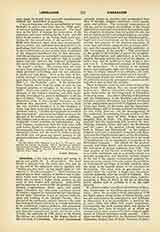

Leubus, a celebrated ancient Cistercian abbey, situated on the Oder, northwest of Breslau, in the Prussian Province of Silesia. The year of foundation is not quite certain the deed of foundation of 1175, formerly considered genuine, having been proved a forgery, but the statement of the old Cistercian chronicles and Polish annalists, that Leubus was founded August 16, 1163, by Duke Boleslaus the Tall, is the most probable one. Formerly the Benedictines were there. The Cistercians of Leubus have done a great deal for the cultivation and Germanization of Silesia, which was formerly wilderness, primeval forest, morass and moorland, although their activity has been overrated. The motherhouse of Leubus was Pforta. From Leubus itself there sprang the houses of Mogila and Klara Tumba at Cracow, Heinrichau at Munsterberg, and Kamenz at Glatz. Leubus had extensive possessions. In the Hussite wars the monastery with all the buildings was burned to the ground (1432). When it had recovered from these misfortunes, it was severely oppressed by the Dukes of Sagan and Miinsterberg, and was in their possession for seven years (1492-98), the inmates of the convent having fled. The abbot Andreas Hoffmann (1498-1534) infused new life into the monastery. During the Thirty Years’ War it was occupied by the Swedes in 1632 and pillaged. All the treasures of the church fell into their hands. A few years later they returned once more and carried off the valuable library, which had taken centuries to collect, to Stettin, where it was afterwards destroyed by lightning. As long as the war lasted, Leubus was practically a ruin, but after the peace Abbot Arnold (1636-72) restored it in a comparatively short time and embellished the church and buildings. He called in the skillful painter Michael Willmann, who was employed forty years at Leubus (until his death, 1706). Under Arnold and Johann IX (1672-91) theological and philosophical studies also flourished. The monastery reached its zenith under Ludwig Bauch (1696-1729) under whose rule the enormous and imposing building was erected, which is considered the largest building in Germany and one of the largest in Europe. The principal facade is 225 metres long, the wings are 118 metres long. Under Constantine (1733-47) the interior was decorated, the hall of princes and the library being adorned with extravagant magnificence. In the first Silesian War, and in the Seven Years’ War (1740-2 and 1756-63), Leubus was terribly impoverished by the Prussians and Austrians, so that it had a debt of 200,000 Reichsthaler. On November 21, 1810, it was suppressed by the Prussian Government and confiscated with its 59 villages and 10 domains. Part of the buildings are now used as a lunatic asylum, in connection with which the large and beautiful church is utilized for Catholic worship.
KLEMENS LOFFLER

